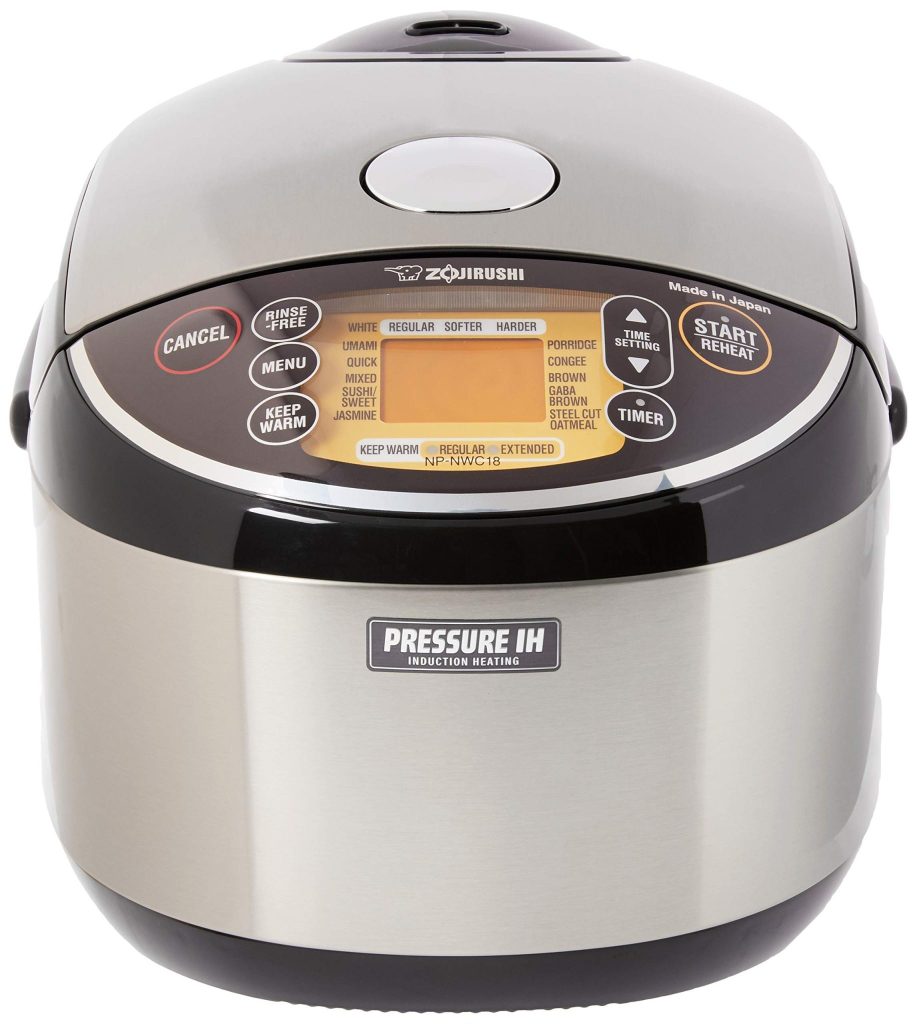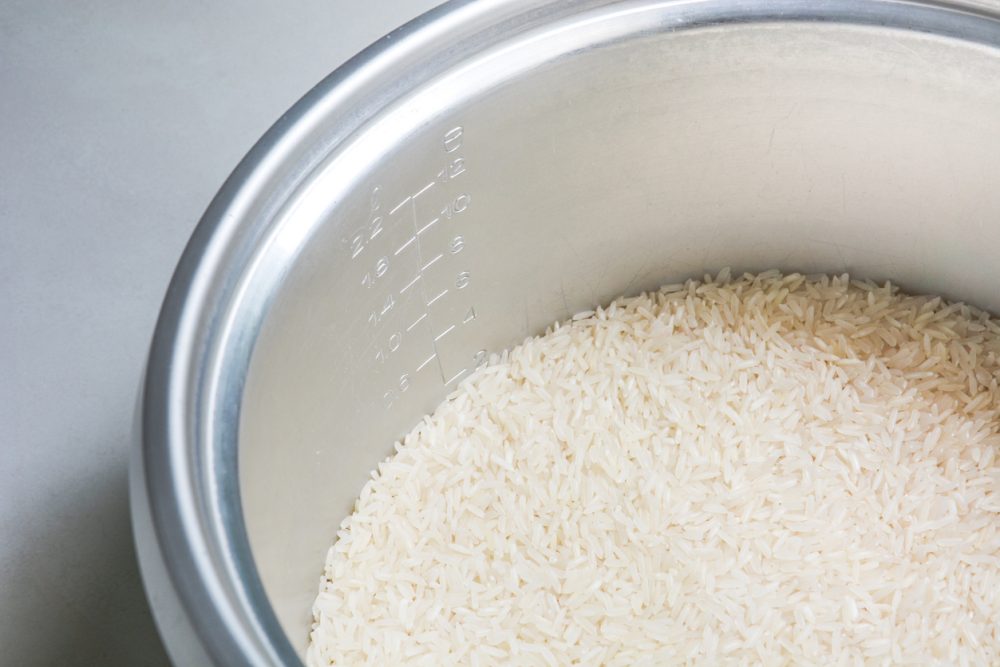You don’t know what you’ve got until it’s gone, goes the popular melody, a sentiment that could easily apply to rice cookers: You can’t really appreciate how great they are until you’ve used one—and then had to do without it.
Not known as a small appliance staple in the U.S., in other parts of the world rice cookers are as essential as a coffee maker or toaster — and for good reason. Sure, with suitable attention and patience one can produce a serviceable couple of cups of rice on a stove top, but only an electric rice cooker with microprocessors and software that measures heat and humidity can produce truly superlative rice consistently and without fuss.

At the pinnacle of the rice cooker category today is Zojirushi’s $711 Pressure Induction Heating Rice Cooker and Warmer (NWJEC10). It has a 5.5 cup capacity, uses AI and microprocessors with sensors to compensate for humid or dry cooking conditions, and has a very legible LCD display for selecting the type of rice and cooking mode. The cooker can handle a wide variety of rice with a variety of settings: white rice (regular, soft, softer, firm or firmer), umami, mixed, sushi, Jasmine, porridge, congee, steel cut oatmeal, quick white, quick Jasmine and brown rice.
The Zojirushi NWJEC10 cooker also features an induction cooking system that is usually lacking in lower-price models. The induction element in the cooker generates an electromagnetic field that draws electrons when a magnetic element, in this case a non-stick iron pot, comes into contact with it. The flow of electrons creates heat in the pot with the advantage being that the temperature can be almost instantly adjusted. It’s also more energy efficient.
However, while rice cookers can be flawless, they’re not fast. One can make faster—although decidedly less flavorful—rice on a stove. But rice cookers like the Zojirushi induction model we tested produce far superior, fluffier, more delicious rice every time. And cookers like the Zojirushi Pressure Induction model allow you to set it and forget it. After you start, say, white rice at the firm setting, you can go on to do the rest of your prep work in the kitchen and not bother with the rice until you’re ready to serve. Once the cooking is done, the rice cooker will keep the rice warm for hours without drying it out or burning it.
In our testing, the Zojirushi Pressure Induction cooker proved that it deserved its reputation as the best home rice cooker available. It has scores of settings to accommodate the most discerning cook, from firm or sticky white rice to jasmine rice to steel cut oatmeal and congee. It really comes into its own producing brown rice, including a GABA setting. GABA stands for gamma-aminobutyric acid, which is released with slower cooking times and is supposed to have added health benefits. While we can’t vouch for that, we can confirm GABA tastes better—and takes more time.


Consider that 3 cups of white rice with a standard “softer” cooking setting takes 57 minutes, while the same amount of brown rice at the GABA setting takes 2 hours and 5 minutes. On the other hand, cooking brown rice properly on the stove is challenging, whereas the Zojirushi induction rice cooker gets it right every time, with the right degree of chewiness without becoming overcooked or sticky. Indeed, every type of rice we tried with the Zojirushi machine was handled with aplomb, as if an expert chef had spent hours toiling over a stove to produce it.
If the Zojirushi model has an Achilles heel it’s that it offers so many options, it will take most cooks months before they learn what setting they prefer (who knew there were so many choices?). So Zojirushi has come up with a novel feature called “My Rice (49 Ways).” After a meal, you can criticize (or praise) the machine by imputing your assessment of how the rice turned out (like a star ranking). Based on your inputs, the Zojirushi rice cooker will continue to make small changes to the cooking times, humidity, etc., until it gets to exactly the way you like it.
If we had one criticism of this exquisite appliance, it was that the self-cleaning function was less than perfect. To perform a self-clean, you put some water in the cooking bowl, close it and hold the timer button for 3 seconds to trigger the 60-minute cleaning cycle. If you’ve been neglectful (you’re supposed to clean the machine’s lid after each use), the pressure cooking will loosen up any hidden starchy build up in the system’s valves—but you’ll still have to do an extensive wipe down and lid cleaning to finish the job.
Using a rice cooker, any rice cooker, also requires an extra step that some Western cooks may not be familiar with: rinsing the rice. Rinsing it in a bowl with one’s hands removes any starchy build up on the outside of the grains. The rice should be washed by hand until the water in the bowl becomes clear. We think the extra handling is a small price to pay for superior rice. As is the Zojirushi Pressure Induction cooker’s higher price tag, if you want the finest rice every time.















